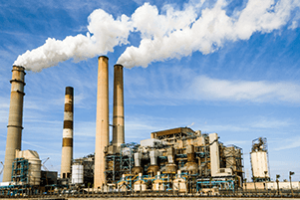
Industrial odors can come from many different processes, such as wastewater treatment, foundry processes, oil refining, roofing production, pulp and paper production, asphalt storage and loading, food processing, and chemical production to name a few.
Industrial facilities with these types of odor-generating processes may be required to address and treat odors for purpose of employee health and safety or in response to odors crossing property lines into neighboring properties.
Multiple factors should be considered when selecting an odor control system for your facility. These include the identities and concentrations of the odor-causing contaminants, gas temperature and humidity, the presence/absence of particulate matter, reliability and uptime, and the lifecycle cost of each system. APC Technologies offers four highly-effective solutions for addressing industrial odor problems:
- CarbonPure Odor Control Systems use a wide array of activated carbon media — tailored in each case to the contaminants and exhaust gas conditions that are present — to remove contaminants from the gas stream via adsorption or chemisorption and deliver high-efficiency odor removal – up to and in excess of 99% in cases. Both hydrocarbon and sulfurous odors (e.g., H2S, mercaptans) are especially suited for adsorption systems. In many cases these systems are simpler, safer, and lower lifecycle cost than comparable technologies. CarbonPure adsorption systems come in both once-through and regenerative types.
- GP Packed Tower Scrubbers deliver extremely high odor control efficiency for applications in which the odors are soluble. GP packed tower scrubbers maximize absorption of VOCs using proper up-front modeling, high-efficiency low-loss packing, and proper scrubbing liquid system design. GP scrubbers provide corrosion- and temperature-resistant construction as needed. Vertical, horizontal, and multi-stage units are available.
- CP Series Catalytic Oxidizers utilize high-efficiency catalysts to reach 97%-99% destruction of hydrocarbon and other odors at lower operating temperatures. APC’s unique Ultra High-Efficiency Filter (UHF®) is often used as a pre-filter to protect the catalyst and can guarantee catalyst life at a minimum of 3 years. APC’s catalytic oxidizers may require little or no natural gas to sustain required temperatures, through the use of high-efficiency heat exchangers, depending on composition and heat content of the gas stream.
- ThermPure Series Thermal Oxidizers offer very high odor control efficiencies – 99% plus – of hydrocarbon and other odors through high-temperature conversion of the emissions to products of combustion. APC provides primary and secondary heat exchangers to maximize the energy efficiency of the thermal oxidizer.
In cases where particulate matter — whether condensed or solid phase — is present and could foul the above odor-control equipment, APC’s Ultra High-Efficiency Filter (UHF®), or an APC baghouse, or a fixed filter can be used upstream of the odor-control equipment. A baghouse or fixed filter can be used in cases where the particulate matter is dry and not sticky. The UHF® filter is made to especially address applications that have fine particulate matter that is in liquid phase, mixed phase (liquid and solid), semi-solid (e.g., at or around freezing point of the emitted material such as many polymers and plastics), or sticky, removing such fine particulate 24/7 without any filter plugging issues. In certain cases where the odor-causing agent is in a liquid or solid phase to begin with, such as smoke, aerosol droplets, or if the gases can be condensed out of gas phase into aerosol, the UHF® filter could be used alone to control odors.
APC Technologies uses all of these odor control solutions, basing selection on which system will best meet the given application needs and conditions. Our experts are ready to assist you in identifying and addressing your specific odor control needs. Contact us today to discuss your needs.

